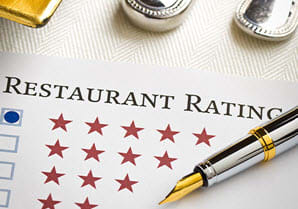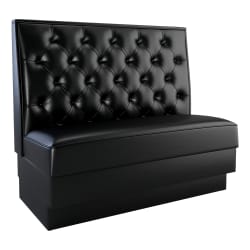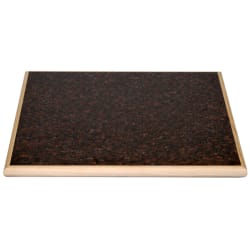Dining experiences can make an everlasting impression on the customer. Culinary sophistication and high standards can generate positive memories hotel guests but what ultimately sets you apart from your competitors is your hotel design and layout. The right customer service, commercial hotel furniture and hotel restaurant design can help achieve your business goals and ensure that visitors will return. Hotel restaurants differ from independently owned restaurants in many ways, however.
Enhance Hotel Restaurant Customer Experience: Tips and Layout Design Ideas

Operational Procedures

Comparatively speaking, the typical size and scope of managing a restaurant within a hotel tends to be much larger and a more operationally challenged responsibility than an independently owned commercial dining venue. When operating a restaurant outlet in a hotel, the scope and depth of operational procedures are more layered out and intricate. For example, the staff is bigger; the turnover in terms of hiring and/or firing service staff is more frequent, the financial plan of budgeting etc.
Partnership with Suppliers
While maintaining a good relationship with suppliers is crucial to the success of any commercial restaurant and hospitality venues, the same rings true for hotel restaurants and catering facilities for that matter. Hotel food and beverage managers, on the other hand, are more likely to interface with not only larger number of food vendors but also event planners, florists, entertainment contractors, lighting specialists, and guests hosting social affairs at the hotel more than managers at independently operated restaurants.
Prediction of Sales Cycles

A hotel typically caters to large social affairs such as a wedding or a corporate event than an independently owned restaurant. Consequently, the time frame of sales leads as well as the ability to evaluate and forecast service and staffing needs takes longer. It is standard that the planning process takes months and sometimes even years as a way for hotel management to ensure that the staff is on the same page as them and have all the relevant and updated information when necessary. Review meetings at hotels are regularly held as well as keeping a separate, organized, yet detailed file containing things to do, timelines, and specific details about the event.
Measuring Success with Cross Promotion

The success of the hotel impacts the restaurant from within. Formulating and implementing creative integrated and marketing strategies is one way to bring attention to your hotel from potential guests. Collaborating with hotel and restaurant networks to create promotional concepts, offering loyalty givebacks to hotel guests, creating an engaging but interesting website and partnering with a database of prominent experts will not only draw new business in but attract new guests. As a hotel owner, your objective is to encourage your guests to dine at your restaurant.
Furniture for Hotel Restaurants
When deciding on furniture to purchase for your facility, you should reflect on your long-term business plans and goals. Furniture for hotels is an investment and therefore commercial furniture is highly recommended for your hotel. The expenses of commercial hotel furniture, especially for a restaurant compensates with its design that ensures durability and resistance to constant wear and tear for years.
Similar to restaurant furniture at an independent commercial dining venue, tables, chairs, bar stools (for your hotel bar) and booths that can be easily cleaned are an integral part of a hotel restaurant layout. Additionally, the upholstery embedded in the furniture should be stain-resistant. The fabric patterns and materials that you use should complement the décor and environment you wish to create as well.
Furniture Shape and Style
The hotel guest’s dining experience is influenced by the hotel restaurant design expressed through the furniture’s shape and style. For instance, round tables are conducive for conversations while square or rectangular shaped tables are more space efficient. With seating capacity in mind, table tops should be large enough to accommodate the size, shape, and number of tableware you intend to use. Many venues, including hotels, have strong preferences for two-person tables because they are perfect for couples looking for an intimate hotel dining experience.
While brainstorming ideas for your hotel restaurant design and layouts, furniture placement that is anchored and portable should be a factor. Anchored seating is furniture that is attached to a wall or a floor. Booths are popular choices of anchored seating among owners and managers many eateries. Portable tables and chairs can be placed anywhere in the hotel restaurant. These types of furniture are commonly situated in the middle of the dining room and away from walls.
Prior to opening a hotel, try putting your feet in the guest’s shoes and seeing matters through his/her angle. While conceptualizing designs and layouts for your hotel restaurant, you should develop enough room for your staff to conduct their services and guests to enjoy their meals minimizing the encroachment of spaces that separate them. In conclusion, the layout and design of your hotel restaurant can increase profitability while influencing the guest’s dining experience and most importantly, your ability to ensure customer satisfaction from your guests.
































































